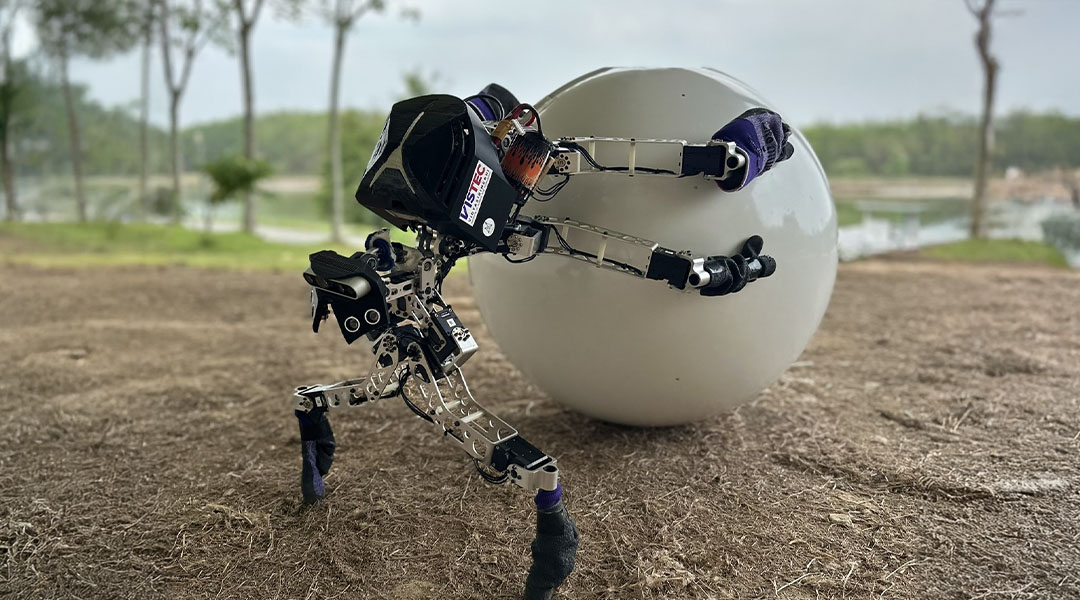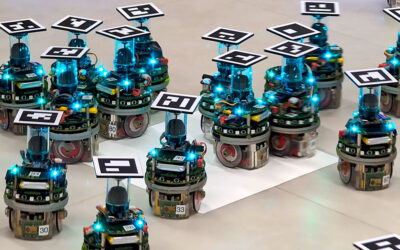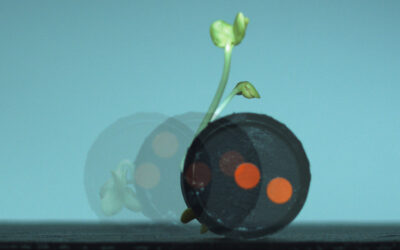The humble dung beetle, known for its remarkable ability to roll balls of dung many times its own size, has sparked an innovative leap in robotics, offering solutions to complex engineering challenges.
“Learning from nature can lead to groundbreaking robotics technology,” said Poramate Manoonpong, a professor at Vidyasirimedhi Institute of Science and Technology in Thailand and University of Southern Denmark. Drawing from the beetle’s impressive mechanics, Manoonpong’s creation is a compact, upright robot capable of rolling large objects while occupying minimal space.
The robot’s efficient mode of movement not only tests theories on insect locomotion, but also provides a model for robot control and motion that could be useful in rom aiding emergency rescue operations and rolling hay bales to potential roles in construction on Mars or the moon.
A new approach to load bearing
Perhaps Sisyphus eternally pushing the boulder up the hill and Atlas lugging the Earth on his back would’ve had an easier time of things if they’d taken inspiration from the plucky little dung beetle.
Over millennia, in which they squirreled away food and impressed potential mates with their dung balls, dung beetles evolved a unique approach to object transportation that Manoonpong and the research team say had not yet been explored in robotics.
Building on previous work exploring the asymmetric biomechanics of stick insect locomotion, Manoonpong and his Ph.D. student, Binggwong Leung, along with their collaborator Stanislav Gorb from Kiel University in Germany are now on a roll.
“Previously, our focus was solely on locomotion,” said Manoonpong. “Now, we’re expanding into multiple functions, including not only locomotion but also object manipulation and their combination.”
The mechanics behind the dung beetle’s distinctive walking and object-rolling offer unique advantages that go beyond simple curiosity. By studying how these beetles maneuver with precision while pushing objects many times their weight, researchers have uncovered insights into efficient energy use, balance, and coordination.
“Dung beetles are fascinating creatures that excel at large object transportation with high space efficiency,” said Manoonpong. This means occupying a very small floor space relative to the volume of matter being transported.
“As the robot occupies less physical space by morphing its four legs around a large object for object rolling and using only the two remaining legs for walking, it causes minimal disruption to its surroundings and can operate more efficiently in confined areas while transporting objects,” he said.
Beetles rolling balls of waste might seem like a simple, even unappealing, behavior to emulate, but replicating this multitasking feat is both computationally and mechanically complex.
“The difficulty was to achieve dynamic ball-rolling motion without stop-and-go movements under various conditions, including different ball types, weights, and terrains,” said Manoonpong. “Additionally, the robot needed to balance and adapt its posture with minimal sensory feedback.”
Unlike many approaches to bioinspired robotics that rely on machine learning models trained on extensive sensory data and feedback from multiple joint positions to refine walking patterns, this approach to controlling orientation is based on just two signals — roll and pitch — combined with biomechanical legs.
“For the biomechanical legs, we incorporated soft materials and compliant fin ray-based tarsi to improve gripping performance and enable passive adaptation to terrain irregularities, facilitating stable ball-rolling behavior on uneven surfaces,” said Manoonpong. “This solution was inspired by the observation of dung beetles’ ball-rolling behavior and their unique leg morphology.”
The benefit is that it offers adaptable control mechanisms that can be generalized to other multifunctional robots, such as object-rolling quadruped robots. This means that robots tasked with handling diverse functions, from transporting heavy loads to navigating challenging terrains, can adopt this simplified yet effective control system.
Robots in the wild
In nature, dung beetles apply their distinctive locomotion and transportation skills for a single-minded purpose, but Manoonpong and his team have greater ambitions for their robots.
“This innovative approach can potentially revolutionize future missions in construction, search and rescue, inspection, agriculture, and space exploration,” he said.
He and his team envisage food or medicine encased in hollow balls for protection and transportation during emergency situations with limited space. “The principle of robot rolling objects could also be extended to rolling round hay bales in agricultural fields. We can also use the solution for object transportation for construction in space,” he added.
The next steps are increasing the object-to-robot ratio so larger items can be transported — dung beetles can move loads ten times their size, while the current iteration of the robot can handle objects about their own size.
The team say they have plans to delve even further into the animal kingdom, taking inspiration from colonies of ants working together to move great volumes of matter.
“We will also explore robot-robot collaboration, where multiple robots work together to accomplish tasks such as transporting very heavy and large balls together for construction,” said Manoonpong. “We’re particularly interested in how different robots can interact and cooperate to transport very large and heavy objects that individual robots cannot handle alone.”
There is some way to go before armies of insect-inspired robots build great structures on far-off planets, but this work again proves the value of decoding complex animal behavior and using neural control systems for increasingly complex machines, using nature’s age-old wisdom to push — or roll — modern robotics forward.
Reference: Leung, Binggwong, Stanislav Gorb, and Poramate Manoonpong, Nature’s All-in-One: Multitasking Robots Inspired by Dung Beetles, Advanced Science (2024). DOI: 10.1002/advs.202408080
Feature image credit: Poramate Manoonpong et al.

















